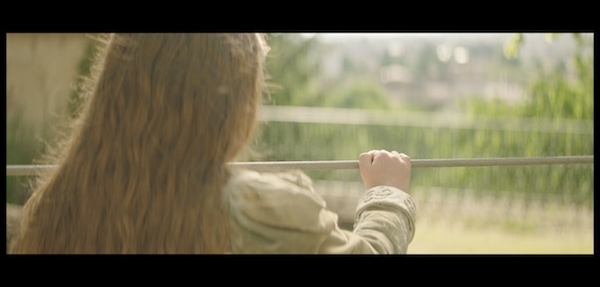Turning a Beloved Book into a Beloved Film
It seems that we are constantly surrounded by novels being adapted into films, sometimes at an alarming speed. Some of them may be trying to chase the latest fad, but most are created by those who have fallen in love with them. When you are enamored with one medium, it’s hard not to picture it in another. For writer director Helen O’Hanlon, her love of the Caldecott Medal winning book Mirette on the High Wire (by Emily Arnold McCully) translated into a cinematic journey to make her short film of the same name, Mirette.
Image provided by London Flair PR
Mirette tells the story of a young girl who lives in a boardinghouse, who’s guests are always of the carnival variety. She is friends with all, but it’s the arrival of a secretive wirewalker that captures her attention. The film plays off the carnival ambiance of the friendly occupants to create a whimsical film about adventure and personal growth in unexpected ways.
For O’Hanlon, the attraction to the story and the character of Mirette was immediate when she came across the story in 2013. It presents itself in a cinematic way, which is hard not to do. When you fall in love with a literary world it’s hard not to imagine what it would look like in the film world. It becomes a goal to see the situations unfold in tangible reality.
“I loved the story, the student who teaches the teacher, the timeless tale of a seemingly invisible girl who lifts us all up to the stars,” O’Hanlon adds.
Just because we visualize it doesn’t always mean it’s an easy translation between mediums. Several literary elements may get lost in the conversion, but the challenge O’Hanlon and her team faced when making Mirette were more physical. The story is about a wirewalker, and that is a huge element both for the story and for the optics.
For 8 months prior to filming, the lead actors, Dixie Egerickx (Mirette) and Jean-Marc Desmond (Bellini) trained to be able to actually wire walk and feel comfortable while doing it. Once that hurdle was conquered, they still had to deal with temperamental rigging machines and the complexities involved in that field of athletics.
Image provided by London Flair PR
“This was an epic cinematic film we wanted to make — we knew to make it special would take a huge amount of ambition and bravery in the face of all sorts of challenges. We are all very proud of what we managed to achieve,” O’Hanlon explains.
Achieve they did, not only in the action of wirewalking, but in the atmosphere attached to something so full of magic in and of itself. This storybook feel was largely successful because of the ways they used film equipment, like anamorphic lenses. O’Hanlon’s goal was to make the film “feel like we had fallen into an old much loved book,” and her partnership with Cinematographer Mark Stubbs was key.
“Mark (Stubbs) is such a talented artist and we took such care to craft this world. All the elements had to work together of course,” O’Hanlon adds. “We laboured with great love over the production design, props, and costumes so that everything would come together to bring this world richly to life.”
As in so many films, the heart of this film was exposed through the talented cast. From the loving eyes of Miriam Margolyes (Meme Gateau) to the fiestiness of Bebe Cave (Harlequin), to of course, the adventure of Egerickx’s Mirette. When the cast blends seamlessly together, one tends to think it was always meant to be. The casting process for O’Hanlon was critical, something that was of great importance to her. Each and every one, from the characters to the extras, were hand picked and given an equally important character backstory to help enrich the film as a whole. Nothing was left unturned or unimportant in creating the film version of Mirette, and sometimes serendipitous circumstances can advance a project.
Image provided by London Flair PR
“One of my favourite stories from casting came about because I attended a talk by Baz Luhrmann about Romeo & Juliet (an all time favourite film of mine) and Miriam Margolyes was there on stage recounting memories from the shoot. It struck me that in Mirette, the character of the mother should be rewritten as a Grandmother,” O’Hanlon adds. “I went home and rewrote it specially for her (Margolyes). When we sent the script to her she replied personally that she loved it and wanted to do it, well, you can imagine my elation. It was the one of the greatest moments — a turning point in getting the film made. Thereafter we had such momentum.”
The ultimate take away from this film is the fantasy element of a dream to have an exciting profession. It isn’t about wishing on our lucky stars for the opportunity, but in the realization that the dream is rooted in hard work and belief in yourself. Mirette brings an innocences to fantasy, allowing the audience to believe again. Nothing is truly out of reach, we can work towards anything our hearts desire. O’Hanlon calls this “Magical Realism,” and is a style she plans to be creating in for a long time. If Mirette is just the start, it’s going to be a mesmerizing career to keep an eye out for.
Written by Lisa Mejia
Images provided by London Flair PR



